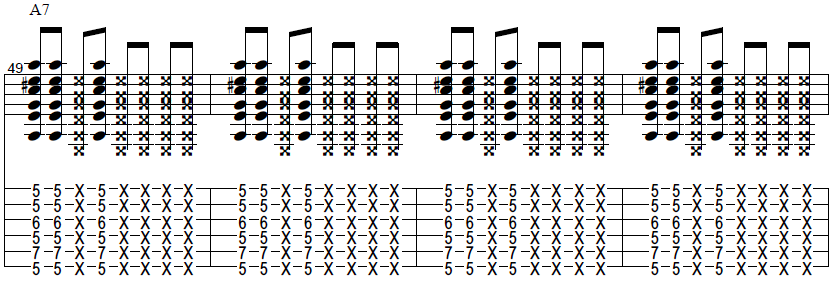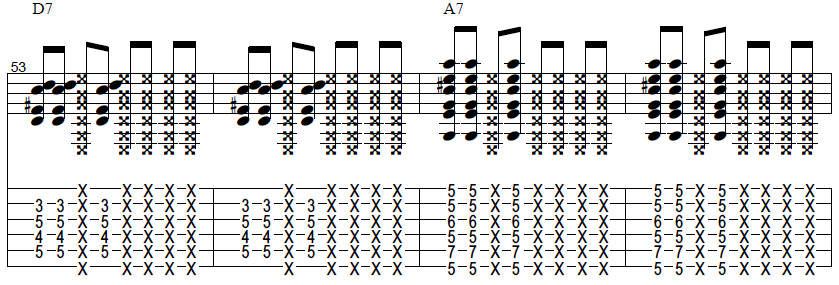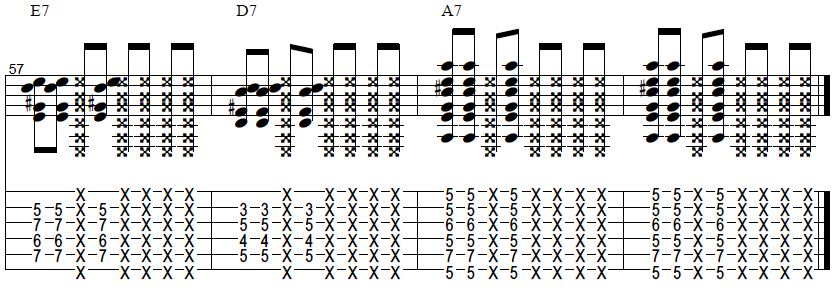Guitar Jam Mini Course Lesson 4:
Playing Rhythm Parts At a Guitar Jam
Now that you know how to talk the talk in a jam session, let us look at all the ways that you can bring life to your jam session dream. No matter how much you know ‘how to talk the talk’ with other musicians, you also need to be able to know exactly ‘what’ to play on the guitar.
In this article, we will specifically look at all the ways in which you can prepare yourself to play rhythm parts. In the following lesson, which you will be getting in tomorrow’s email, we will look at lead parts that you can play at a jam session.
The chords that you will see here function as the rhyhtm guitar parts that you can use in a jam session to accompany a lead guitarist. These chords are the dominant seventh chords we talked about in the last lessons of this mini-course. These seventh chords can be transposed all over the neck and so they are very usable in this regard. Let us look at this first seventh chord here with the root note on the sixth string. As you will see in the image below, we are playing an A7 chord as a bar chord.

5 7
A7
To play a 12-bar blues progression in the key of A, we would be using the D7 chord as well, since the D7 chord is the fourth chord in the key of A. We would also be using the E7 chord (which would be the five chord in this progression).
Here are these chords: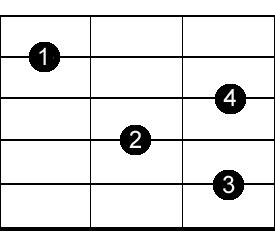
5 7
E7

3 5
D7
Look at the tab below, here we fitted these three chords in the basic 12 bar structure:
Transposing Blues Chords Over The Neck Of The Guitar
These dominant seventh chords played above are really usable because we can transpose them very easily throughout the neck of the guitar. For instance, here we are playing a blues in A. If we want to play a blues in B, we could use the same progression but transpose it two frets higher so that the root note of the whole progression lies on the B chord. This is also true for all the other keys.
So if we want to transpose to the key of F, we would transpose to the first fret on the sixth string. Why? It is very easy explainable; it is because the root note of this progression lies on the sixth string. So if we are playing a blues in A, the root note lies on the fifth fret because that is the A note. When we are playing a blues in B, the root note lies on the 7th fret on the sixth string because in this case we are playing the B note and the B7 chord comes from that.
When we are playing a blues in F, then the root note is to be found on the first fret on the sixth string. In that case we are playing a blues progression with dominant seventh chords in the key of F.
Playing Minor Blues Progressions
When we learned how to talk the talk with other musicians in a blues jam session, we also looked at ways in which you can communicate when you would play a minor blues. As discussed, if you would play a minor blues in A, then we would use these chords; A minor 7, D minor 7, and E minor 7 – all of which you can find in the images below.
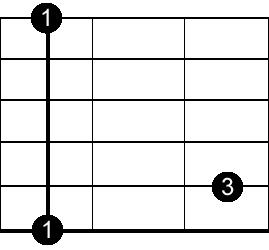
5 7
Am7
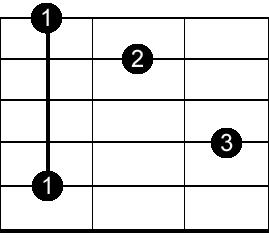
5 7
Dm7

7 9
Em7
A very common way to play a minor blues progression is to arpeggiate each minor 7th chord. This means that we are going to pick individual notes of every chord, instead of strumming the entire chord, as you can see in the tab below.
Once you get the hang of these chords, it is also easy to transpose them to other keys. You just use the same way as we did when transposing the dominant 7 blues progression.
Now that we have looked at ways in which you can play rhythm parts in a jam session, it is also important to know that this is only one of the hundreds of ways you can play rhythm guitar in a blues jam session. We could be also using rhythm riffs, rock and roll riffs, double stop riffs; we could be using open chords etc.
For now, it is not important that you know all of the possible ways here. It is important that you know this one way first, because it is very easy to use and to transpose these chords all over the neck of the guitar. In the next lesson, we are going to look at how to play lead guitar solos in a jam session.
Learn about the Essential Blues Guitar Soloing Lesson

